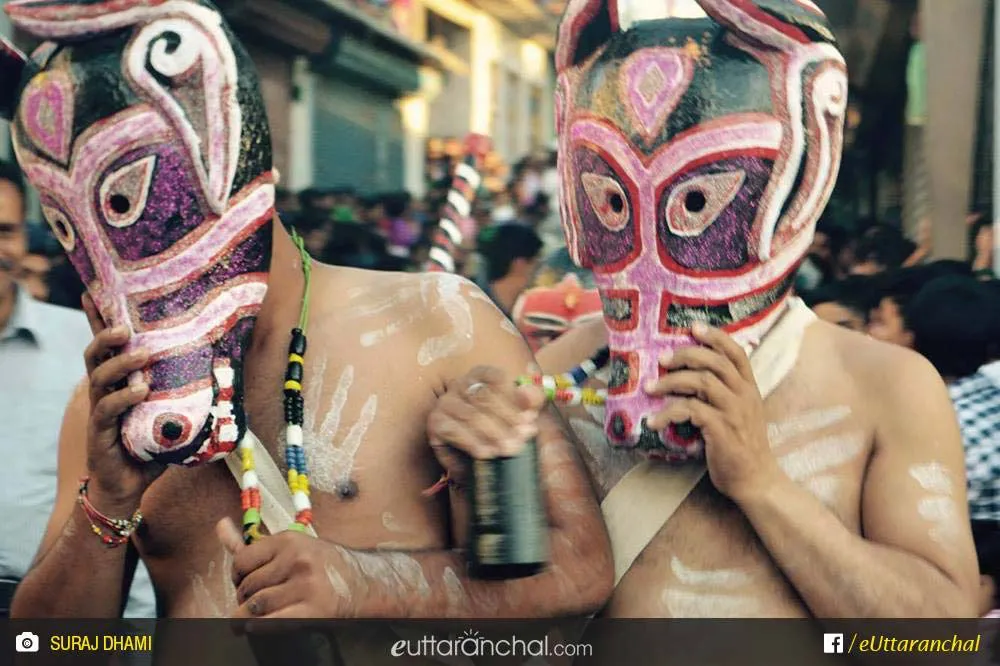The Hilljatra, which is being celebrated in some parts of Pithoragarh district, is essentially the festival of pastoralists and agriculturalists. In the developmental process, the aathon (eighth day of bhado) and Gawra Visarjan also became the part of Hilljatra.
The festival, which basically came to the Sor valley from the Sorar (Mahakali) region of West Nepal, was first introduced in Kumaour village. The Jatra was also accepted by the people of Bajethi, another village near Pithoragarh town and with some modifications it was introduced in Kanalichhina and Askot regions as Hiran Chital.
About Hilljatra Festival
The Hilljatra is related to ropai (the plantation of paddy) and other agricultural and pastoral labours of the rainy season (Hill = mud, Jatra = Jaat). It has also been connected with the victory of the Champawat ruler.
There is another story that Kuru, the representative of a Chand King, who went to Sorar (Nepal) to participate in the hilljatra, was able to sacrifice a buffalo with horns covering the neck. The people became happy and wanted to present Kuru a gift.Kuru thought of introducing this festival in Sor valley and asked for four masks, Lakhiabhoot, Halwaha, two bullocks, and one implement - the Nepali plough. In this way, the hilljatra was introduced in Sor.
How is Hill Jatra Celebrated
In the first part of jatra, worship and the ritual sacrifice of goats is performed, and in the second part, different pastoral and agricultural activities are presented in a dramatic way. The masks are very expressive and this is the most entertaining part of the festival.In the third and last part, the songs are recited with the performance of circle dance (Chanchari). It continues late into the night. The songs are traditional as well as new and popular. The hilljatra is a living tradition and all care should be taken to preserve its style in a rapidly changing society.
